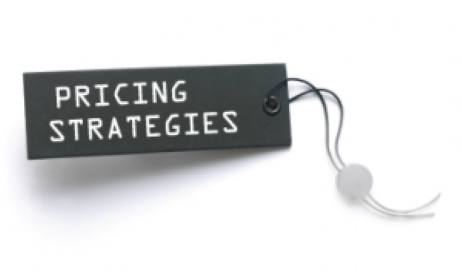
16 Sep Pricing strategy – there’s more to it than fixed fees
The debate about time costing and value pricing rumbles on . . . . But there’s a lot more to pricing strategy than that debate – and even beyond the imperatives of positioning/differentiation and personal selling skills, legal practices could and should be doing a lot more to price their services creatively and effectively. Below are a few strategies that law practices could try more often, as well as a few practices that they should drop.
A pricing strategy to try
Choice
Clients like choice – and its better to get them to choose between your prices rather than between your price and someone else’s. Too many practices see just one way of doing things and offer only one – take it or leave it – offer.
Try to shake things up a bit by offering clients a range of options based on alternative approaches and strategies, alternative scope, solicitor experience, level of urgency, level of service and more. Discuss all these options with the client to help them make an informed choice (which of course gives you the opportunity to up-sell to a higher value option).
Once you start playing with choice, a whole new pricing strategy playground opens up for you. You can try different bundling and unbundling options, can push clients towards favoured prices by weighting them with disproportionate value, and all sorts of other psychological tricks.
It’s fun – go for it!
Pricing the client / project
Contrary to some assumptions, there is nothing to stop you charging one client more than another, based on either perceptions of the client’s ability to pay, or some measure of customer value. If you are handling a $10m transaction for instance, the work might be roughly the same as for a $1m transaction – but the proportionate value for the client is much more. Shouldn’t you be charging more?
This is one argument for value pricing of course. Solicitors worry about being ‘found out’ charging one client a higher hourly rate than for another and so tend to stick to roughly the same rates, so see value pricing as providing more flexibility. But there is no reason why law practices can’t charge different hourly rates to different clients or client groups. This is after all standard practice in other industries.
Fixed contingency fees
One logical extension of the above approach would be to specifically fix legal fees as a percentage of the value of any settlement, property or transaction value. Unfortunately – and curiously – this is prohibited by s325 of the Legal Profession Act (Contingency fees are prohibited), but there is nothing to stop a practice from offering a client a fixed fee which is then justified as being but a small percentage of the anticipated settlement, property or transaction value.
Time-based bonuses
Money is of course not the only client value-trigger (along with time, emotion, risk and convenience). Out of those, time is the most objectively measurable and of increasing importance to clients. If your clients value early settlement or quick resolution, there is nothing to stop your charging a bonus or premium for such a positive result.
In the same way, if a client wants something done urgently, there is nothing to stop you charging more – either in terms of hourly rate or fixed fee. If you are going to be working evenings and weekends, ask the client to pay your overtime or penalty rates!
Premium pricing
80% of clients are willing to pay more for perceived higher value, and the ability to charge premium rates is most commonly linked to specific positioning, differentiation or superior experience or expertise.
But there doesn’t have to be any real tangible justification for premium pricing
Often, premium pricing is itself the primary (or only) positioning tool – working on the theory that people see premium pricing as a reliable indicator of higher quality. Yes – this works! We’ve all been conned into paying more for a product or service based on nothing more than an assumption that ‘it costs more, so it must be better!’ Stella Artois – a rather bland gassy beer was for years advertised under the banner ‘reassuringly expensive’, and this rather than anything else justified its premium pricing.
As clients find it very difficult to assess the quality of legal services objectively, a premium pricing strategy can be seen by clients as a reliable indicator of quality – leading to more rather than less demand.
Discounting for quick payment
It is common practice for solicitors to charge interest on unpaid bills, but a psychologically more appealing approach that relatively few law firms try is to offer a discount for prompt payment. With this sort of discount, clients get a reward, a bargain! for prompt payment rather than punishment for late payment (which they resent!) – with the result that they feel better about their fees.
The trick is of course to raise your prices before the discount so you recover full profits from an early payment. It may seem as if there is no overall change in pricing strategy, but to a client the difference between punishing interest and the offer of a discount can be powerful.
Loyalty & volume
Loyalty is rare, and deserves to be rewarded – as it is in so many other areas of business. It is true that established clients are unlikely to stay with you just because of a 3-5% discount, but there is a high likelihood that they will feel unloved and unappreciated if you do not find a meaningful way of acknowledging and rewarding them for all the work they have given you.
Service guarantees
And whatever pricing strategy you adopt, clients resistance can always be reduced by offering a service guarantee. See my earlier blog here.
A pricing strategy to drop
And here are a few all-too-common strategies I would like to see less of:
Market-rate
Charging the same as everyone else suggests you are the same as everyone else. It suggests you are offering a commodity. It can nullify any good marketing messages and can result in downward pressure on fees and discounting.
Market-penetration
Market-penetration involves dropping your pricing below market rate to gain a bigger share of the market, and is a common and self-defeating strategy amongst start-up practices. The fact is that, where 80% of clients are happy to pay more for higher quality and more value, why would you go for the 20% at the bottom. Charging rates well below market rate clearly positions you as a low-price, low-quality offering and can actually lead to lower demand.
Loss-leading pricing
Many practices still offer some services – most noticeably wills and conveyancing – at unprofitable rates in the belief that such pricing will attract new clients who can then be sold more profitable offerings.
It doesn’t work.
Whilst it might have worked to an extent 10-15 years ago, clients are now much sophisticated and will select their legal advisors on a case-for-case basis. They might go to you for a cheap commodity, but that doesn’t mean they’ll come to you for higher value commercial or family work.
In fact, the damage you are doing to your positioning (low cost = low quality) means you are probably harming rather than helping your chances of getting other work.



Sorry, the comment form is closed at this time.